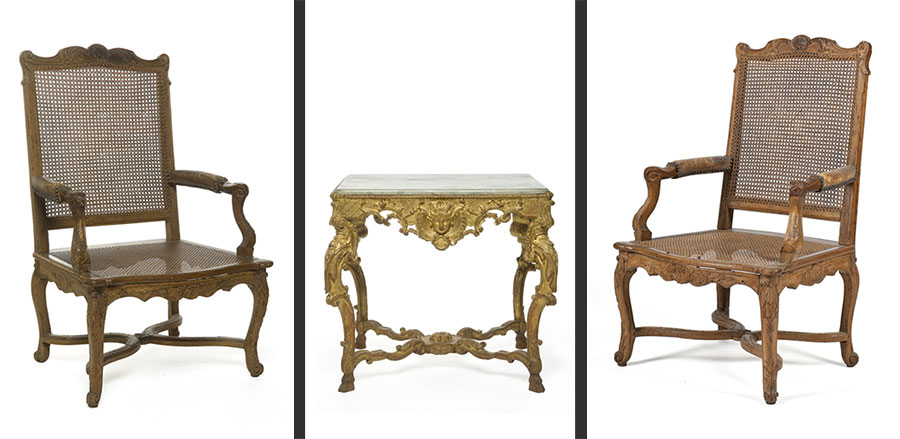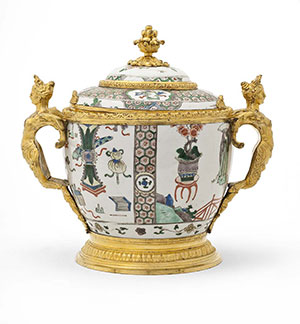


If you want to use this picture, please contact our library
The furniture and objects in this room recreate the atmosphere in a collector’s study at the turn of the 18th century. The study was the last of the sequence of rooms in a wealthy apartment of the period. It came after the bedroom and was exclusively for private use. In a period increasingly concerned with intimacy and privacy, when the bedroom still had a semi-public use inherited from the 17th century, the study was a place of retreat. The master of the house, alone or with close friends, retired there to read, converse or meditate, and whose aesthetic reflections could be inspired by his delight in beholding an array of objects from often distant lands. The study had this dual role of private retreat and “cabinet of curiosities.”
The form of the table in the middle of the room is derived from the mural console table, which gradually left the wall and became a free-standing piece of joinery (in solid wood) with four legs. It retained the decorative vocabulary of its mural predecessor: women’s faces, masks of fauns, latticework, palm leaves and garlands.

The wide, comfortable armchairs in this study are caned, a technique introduced in France in the early 18th century. Replacing upholstery and usually in rattan it enabled the creation of lighter, more ventilated chairs ideal for workrooms (desk chairs), bathroom furniture (bidets) and, as here, armchairs for private rooms. These chairs were decorated with the favourite motifs of rococo decoration: coquilles, palm leaves, flowerets, etc.

The mural console tables are adorned with Chinese porcelain vases and dishes. From the Renaissance onwards, Europeans were fascinated by this material unknown in the West, where the secrets of its production were not discovered until the second half of the 18th century. Objects in porcelain were a “must” for every enlightened collector’s study.
The Chinese porcelain dish on the console table has a gilt bronze mount. In the 18th century, Chinese porcelain was so prized that many pieces were set in a mount, often gilt bronze, to emphasise their beauty and great value.
